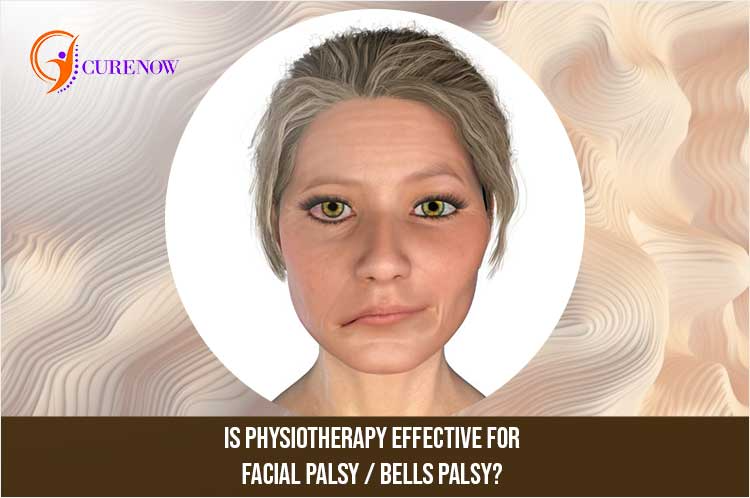Facial palsy, also known as Bell's palsy, is a condition that causes temporary weakness or paralysis of the muscles on one side of the face. It results from damage to the facial nerve, which controls facial expression and movements. The onset of symptoms is generally sudden, with facial drooping, twitching, or numbness on the affected side. Bell's palsy is believed to be caused by inflammation or compression of the facial nerve. Viruses like herpes simplex are thought to be potential triggers. Other predisposing factors include diabetes, pregnancy, and autoimmune disorders. While facial palsy usually resolves on its own within a few weeks, or upto 6 months, physiotherapy can help manage symptoms and speed up recovery.
Symptoms
The main symptoms of facial palsy include:
- Facial drooping on one side, causing an asymmetrical appearance
- Inability to close the eye on the affected side
- Drooling due to an inability to keep food or liquid in the mouth
- Numbness or pain around the ear, cheek, or mouth
- Twitching of facial muscles
- Impaired sense of taste
- Excessive tearing in one eye
- Causes
The underlying causes of facial palsy are not always known, but possible reasons include:
- Swelling or damage of the facial nerve, often due to viral infections like herpes simplex or Lyme disease
- Inflammation of the nerve, possibly from an autoimmune reaction
- Pressure on the facial nerve from a tumor or swollen gland
- Head trauma that injures the facial nerve
- Complications from neurosurgery or ear infections
The Role of Physiotherapy
Physiotherapy involves using massage, exercises, and electrical stimulation to help restore strength and mobility to the facial muscles affected by palsy. Key physiotherapy treatments include:
- Massaging the face to stimulate blood flow and prevent muscle stiffness
- Exercises like puffing out cheeks, closing the eye, frowning, and smiling to maintain muscle tone
- Electrical stimulation of muscles using TENS to contract weak facial muscles
- Stretching and strength training exercises
- Advice on proper eye care like taping the eye shut at night
- Applying heat or cold packs to relieve pain and swelling
- Teaching facial exercises and massage techniques for home use
Research shows that starting physiotherapy early after onset can improve facial symmetry and function. It helps prevent permanent paralysis and synkinesis, which is involuntary movement like eye twitching while smiling.
Physiotherapy is most effective when customized to each patient’s symptoms and administered under the supervision of a trained therapist. It may be combined with medications or other treatments recommended by a doctor. To determine if physiotherapy is suitable for facial palsy, it is advisable to consult a physiotherapist. They can assess nerve damage, and movement impairment, and develop a tailored therapy plan.
Conclusion
Facial palsy and Bell's palsy often resolve without treatment, but physiotherapy can hasten recovery and prevent long-term complications. It helps regain facial muscle strength, coordination, and control. By combining exercises, electrical stimulation, and massage, physiotherapy aims to restore normal facial expressions and functioning.
While physician guidance is still recommended, physiotherapy is considered an effective supportive treatment approach for most cases of temporary facial paralysis.
Visit us at CureNow.in to schedule an appointment with our UK-trained and certified Physiotherapists, and take the first step towards healing.
Visit us at CureNow.in now.
CureNow Wellness Pvt. Ltd.
F-Residences, Shop # 25, First Floor, Wadgaon Sheri, Kalyani Nagar Annexe, Pune - 411014, Maharashtra
Mobile No : 9545345300
- Neuromuscular Physiotherapy: This Is How Brain, Nerves & Spinal Cord Disorders Can Be Treated
- Spinal Cord Injury: 3 Spine Physiotherapy Treatments Recommended By Experts
- What Is Cardiovascular Physiotherapy? What Are The Benefits Of Physiotherapy In Cardiac Rehab?
- What Is Musculoskeletal Physiotherapy?
© Copyright CURENOW . All Rights Reserved. Presented By
RISIAR Step In Business Hub Pvt Ltd
